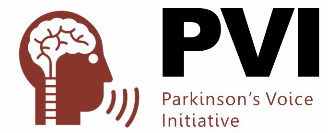Parkinsons Voice Initiative: Unlocking New Parkinsons Treatment Through Twilio Voice
Time to read:


Each year over 60,000 Americans are diagnosed with Parkinson’s disease, a degenerative disorder of the central nervous system for which there is no cure. Seven to 10 million million people worldwide live with Parkinson’s; and while many organizations are working to improve testing and proactive treatment, there’s still a long way to go. Current testing is expensive, cumbersome, and logistically challenging for those with Parkinson’s. The Parkinson’s Voice Initiative is working hard to change that fact by pioneering a new form treatment and analysis — all they need is your voice.
The Study of the Human Voice
Dr. Max Little, mathematician and TED fellow first started analyzing the human voice while studying at Oxford University in 2003. Little discovered that voice disorders such as tremors can be key indicators of Parkinson’s disease. Using a complex set of mathematical algorithms, Little developed a way to detect variations and progressions of Parkinson’s disease. But Little had to figure out how to scale his discovery and make it a resource for treatment.
Little founded the The Parkinson’s Voice Initiative (PVI) to give Parkinson’s patients an easy way to test, monitor and help treat their disease, all via one phone call.
“The physical motor tremors of Parkinson’s affect the vocal folds in similar ways that they affect the rest of the body, so we invested our time and effort into developing a technology to test for symptoms using voice recordings alone,” explains Little. “The current objective symptom tests for Parkinson’s are rarely undertaken outside of trials.”
Little’s team compares voice samples of Parkinson’s sufferers to healthy individuals and analyzes the difference between the two. With the healthy voice as the control group, the PVI system identifies abnormal vocal fluctuations associated with the disease.
“It was crucial to ensure our test had the lowest barrier to entry for our users, and given the ubiquity, the telephone was an obvious choice for a sample collecting device,” said Little. “This is where Twilio comes in; its ability to connect up large volumes of call data with our computer software makes it the perfect solution for what we are looking to achieve.”
“What we’re seeking to do is lay the groundwork for a new way of doing medical research that makes our ambitions of better treatment and diagnosis possible.”
Communications Technology That Makes an Impact
All it takes to participate in PVI is a phone call. Using any cell phone, home phone, or VoIP client, participants can call PVI’s Twilio powered phone number. After a brief recorded prompt, participants will say “ahhh” for around 20-30 seconds while their voice is recorded. Twilio sends this data to Parkinson’s Voice’s platform, which collects, analyses, and stores the recordings.
After many successful trials, Parkinson’s Voice opened its lines in January 2014 for a new study, and in under six months recorded 17,000 people’s voices, with and without Parkinson’s.
Each number has a different recorded voice prompt, so the team able to operate in multiple languages, and offer regional/national accents which helps with making patients feel more at ease with tests.
PVI works with self-reported symptom data from PatientsLikeMe and analysts at Sage Bionetworks to collaborate, share findings, and make better predictions to get closer to finding a cure for Parkinson’s.
The team is now working on a new project focused on smartphone users, utilizing the digital sensors that will help measure body motion, direction and acceleration. If successful, this could drive forward the management of the disease and greatly reduce in-person clinical needs, powered by a phone and voice calls.
Related Posts
Related Resources
Twilio Docs
From APIs to SDKs to sample apps
API reference documentation, SDKs, helper libraries, quickstarts, and tutorials for your language and platform.
Resource Center
The latest ebooks, industry reports, and webinars
Learn from customer engagement experts to improve your own communication.
Ahoy
Twilio's developer community hub
Best practices, code samples, and inspiration to build communications and digital engagement experiences.


